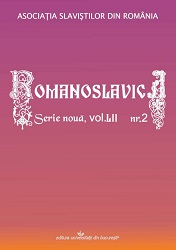Dvojezično školovanje pripadnika hrvatske manjine u Rumunjskoj
Bilingual education of members of the Croatian minority in Romania
Author(s): Petru Hațegan, Sanda Lucija UdierSubject(s): Foreign languages learning, Language acquisition, Sociolinguistics, South Slavic Languages, Preschool education, School education, Ethnic Minorities Studies
Published by: Editura Universităţii din Bucureşti
Keywords: Croatian as a minority language; education in a minority language; local idioms; ethnic identity;
Summary/Abstract: Members of the Croatian minority in Rumania speak different local Croatian idioms, while they are also in contact with local Romanian idioms. In kindergartens and primary schools they learn both standard Romanian language as well as standard Croatian language (Hațegan 2015), and for many of them this represents the first contact with standard Croatian language. In addition to that, during the process of standard Croatian acquisition they also develop the so-called vertical bilingualism, i.e. along with the organic idiom acquired in a family setting during primary socialization, speakers also acquire the standard (or standardized) language, in this case standard Croatian language. Pavličević-Franić (2006) emphasizes the fact that all relations and links belonging to the first language system which are engaged by children during the acquisition process, will be also activated during the development of second, similar language system (in this case, contemporary standard Croatian language). This finding has served as the foundation for contemporary linguistic-didactic models which emphasize the necessity of using native idioms as the basis and support during the standard language acquisition (Petrc 2015). This paper will discuss the variety of Croatian language taught in Rumanian schools dedicated to the Croatian national minority. It will analyze the current state of affairs where only standard Croatian language is taught. Furthermore, it shall offer a proposal to teach, develop and nurture, along with the standard variety, the local Croatian idioms spoken by the Croatian minority in Rumania in order to foster the students’ vertical bilingualism. A similar model of teaching Croatian as a minority language has been applied in Croatian schools in the Austrian region Gradišće (KindaBerlakovich 2005). Its apparent advantage has shown to be the fact that, along with the standard language acquisition which enables students to establish supraregional, multifunctional communication and access to education and business life in Croatian, this model also fosters the usage of local idioms which represent the first language of their speakers, who are emotionally attached to it. Ultimately, it functions as the primary feature of their ethnic and regional identity (Hațegan 2015).
Journal: Romanoslavica
- Issue Year: LII/2016
- Issue No: 2
- Page Range: 163-170
- Page Count: 8
- Language: Croatian

